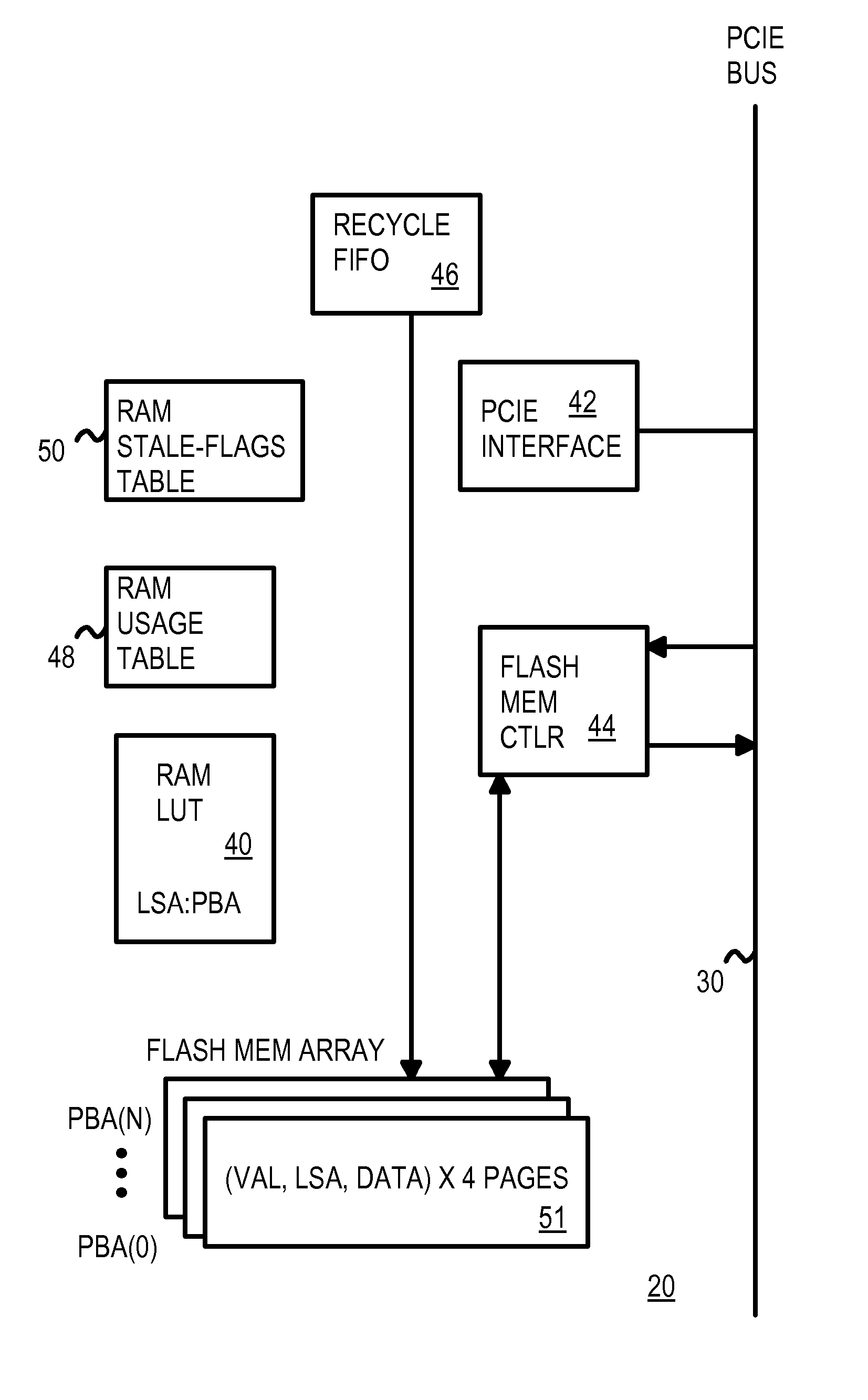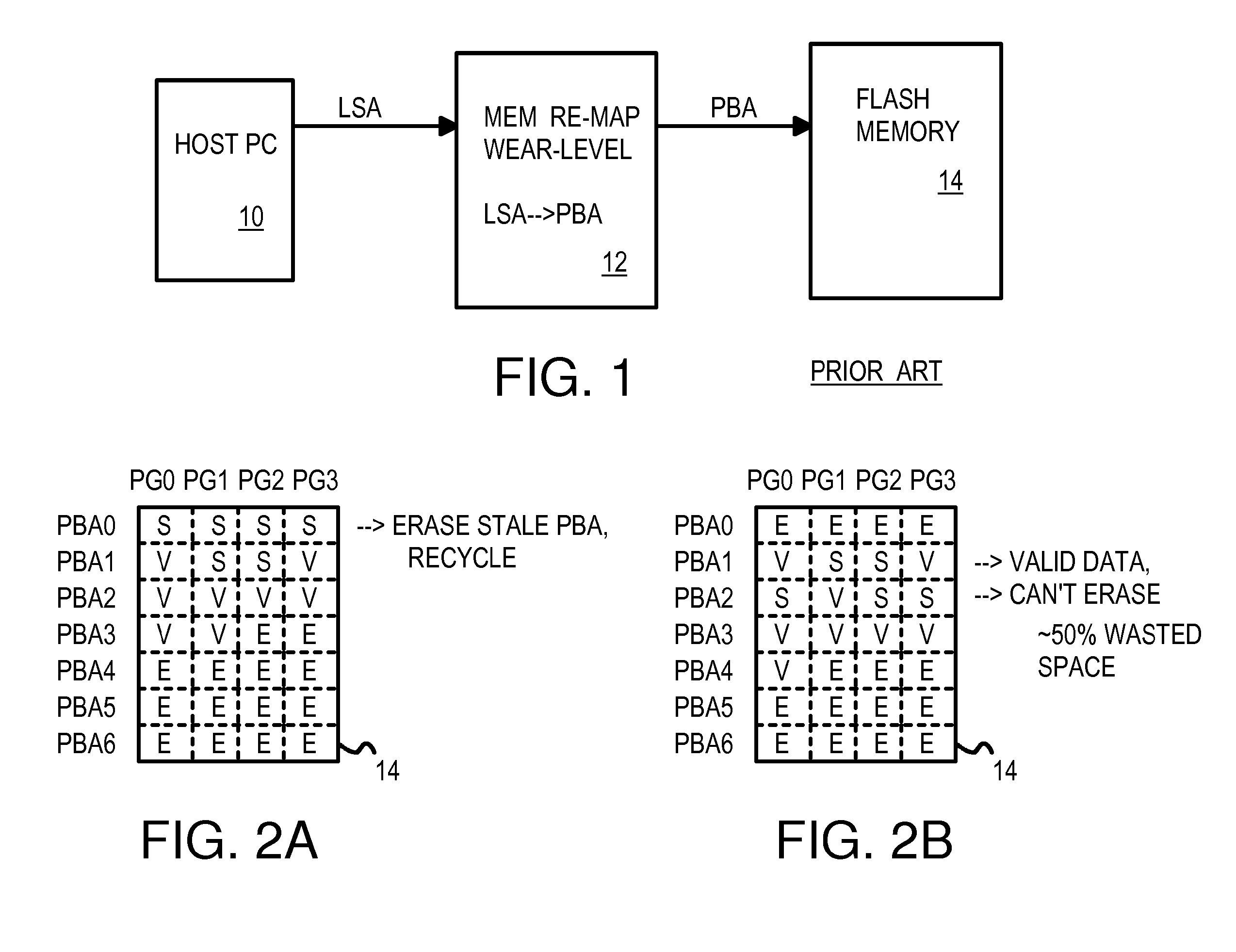Recycling Partially-Stale Flash Blocks Using a Sliding Window for Multi-Level-Cell (MLC) Flash Memory
a multi-level cell, flash memory technology, applied in the direction of micro-instruction address formation, coupling device connection, instruments, etc., can solve the problems of mlc flash chip imposing additional restrictions on usage, flash is not as easy to use for cache, and mlc flash chip may not allow pages to be written a second tim
- Summary
- Abstract
- Description
- Claims
- Application Information
AI Technical Summary
Problems solved by technology
Method used
Image
Examples
Embodiment Construction
[0025] The present invention relates to an improvement in flash-memory managers. The following description is presented to enable one of ordinary skill in the art to make and use the invention as provided in the context of a particular application and its requirements. Various modifications to the preferred embodiment will be apparent to those with skill in the art, and the general principles defined herein may be applied to other embodiments. Therefore, the present invention is not intended to be limited to the particular embodiments shown and described, but is to be accorded the widest scope consistent with the principles and novel features herein disclosed.
[0026]FIG. 3 is a block diagram of a flash-memory card. Flash-memory card 20 connects to a host PC through an external I / O processor over PCIE bus 30. PCIE interface 42 generates packets and performs handshaking in response to commands received over PCIE bus 30.
[0027] The LSA sector address can be extracted from the command s...
PUM
 Login to View More
Login to View More Abstract
Description
Claims
Application Information
 Login to View More
Login to View More - R&D
- Intellectual Property
- Life Sciences
- Materials
- Tech Scout
- Unparalleled Data Quality
- Higher Quality Content
- 60% Fewer Hallucinations
Browse by: Latest US Patents, China's latest patents, Technical Efficacy Thesaurus, Application Domain, Technology Topic, Popular Technical Reports.
© 2025 PatSnap. All rights reserved.Legal|Privacy policy|Modern Slavery Act Transparency Statement|Sitemap|About US| Contact US: help@patsnap.com



